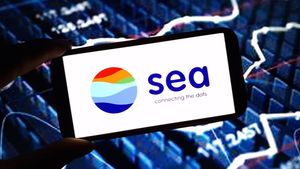How Does a Press Release Differ from a Media Advisory?
By:
PRWire 360
January 25, 2023 at 14:29 PM EST
There are numerous ways for corporations to promote their businesses in the digital world, including social media marketing, email campaigns, pay-per-click (PPC) advertising, press releases, and media advisories. In this blog article, we'll focus on press releases and media advisories, as they're two tools businesses can use to increase brand exposure, website traffic, and leads, among other things.
What exactly is a press release? A press release aims to garner publicity from relevant publications and keep a company's target audience in mind. Press releases may include important information such as:
These are popularly known as the 5 W's plus How, which form the base of the inverted pyramid. The inverted pyramid is a vital part of the entire press release structure, which maximizes a company's potential to reach its target audience and the media. What is a media advisory? The event could include a press conference, grand opening, book signing, live demonstration, etc. Creating and distributing a media advisory is a terrific approach to increase interest in your event and encourage relevant journalists and media personnel to attend. As stated previously, a media advisory contains only the most pertinent information. If you've never created a media advisory before, consider the following advice: Media Advisory Essentials Include the date of the warning and the following contact information on the left:
When you combine these components, your media advisory should be like the following:
Purpose Press releases, on the other hand, can be used to promote or recap an event and convey newsworthy company updates, as previously stated. In addition to highlighting the most important details, press releases can include information about the organization. Length A press release should have between 400 and 500 words, but a media advisory normally has between 100 and 150 words. Timing It is necessary to send media alerts twice. The first should be sent five to seven days before the event, while the second should be sent the day before as a reminder. Press releases, however, do not have to be related to a certain event, allowing for greater flexibility in dissemination time. To that point, the quantity of news releases a company distributes depends on its particular marketing objectives. Consistency and data analysis is required to determine the optimal days, times, and frequency for your company's press release distribution. Audience Contact us immediately to chat with one of our PR Strategists about the importance of press release distribution and the development of media advisories. More NewsView More
Via MarketBeat

Via MarketBeat

Go on a Shopping Spree With 3 Top Retail ETFs ↗
Today 16:27 EST

3 Fresh Dividend Hikes That Might Be Telling You Something ↗
Today 15:49 EST

Recent QuotesView More
Stock Quote API & Stock News API supplied by www.cloudquote.io
Quotes delayed at least 20 minutes. By accessing this page, you agree to the Privacy Policy and Terms Of Service.
© 2025 FinancialContent. All rights reserved.
|

